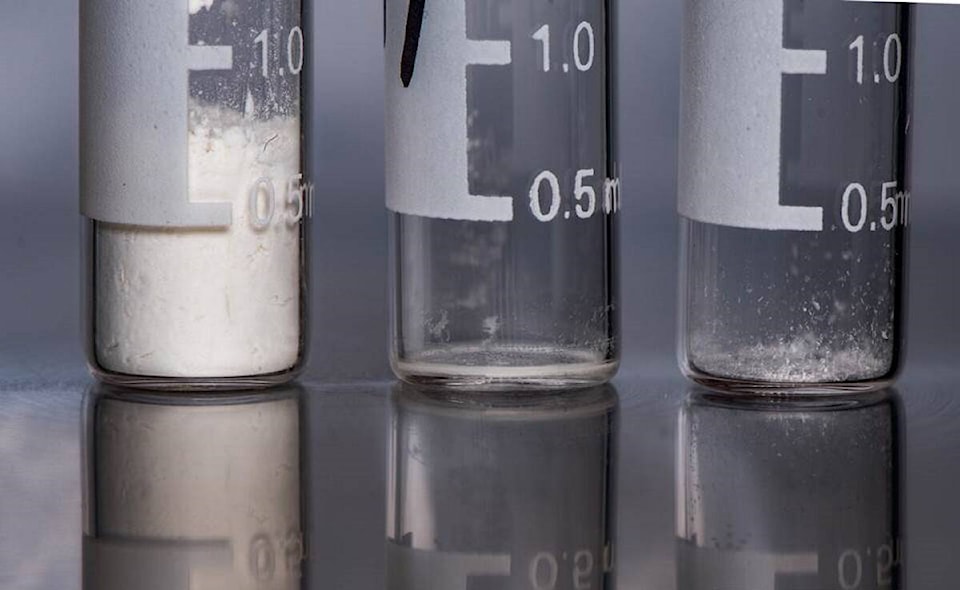The Department of Health is once again warning about the dangers of carfentanil and fentanyl being found in Hay River.
It’s now known that cocaine, crack cocaine and marijuana in the community have been laced with fentanyl and carfentanil.
“People who use drugs should be aware that the drugs they are using may contain other substances which can cause an overdose,” the chief public health officer stated in a news release issued Friday. “All people who use drugs should have Naloxone on hand and be prepared to use it in the event of an overdose and should have someone present when using drugs.”
Studies have shown carfentanil to be 10,000 times more toxic than morphine, 4,000 times more toxic than heroin, and 100 times more toxic than fentanyl.
Reversing carfentanil may require more than one dose of naloxone, the Department of Health advised.
“Carfentanil, fentanyl and other related synthetic compounds are extremely toxic and can cause immediate and unexpected overdose even in frequent users who have high levels of drug tolerance. Even small quantities can result in overdose and death. People who use substances can never be certain if the illicit drugs they purchase contain these substances,” the public health advisory reads.
The public is warned against touching or handling in any way, any suspect substance. Unintentional exposure to pure fentanyl or carfentanil, including touching, ingesting, or inhaling, can cause serious harm including death, the Department of Health stated.
If you suspect an overdose call an ambulance or your local health centre. Signs and symptoms of overdose can include the following:
-breathing will be slow or absent
-lips and nails are blue
-person is not moving
-person is choking
-gurgling sounds or snoring
-severe sleepiness
-person can’t be woken up
-skin feels cold and clammy
Residents are reminded that Naloxone kits (opioid reversing agent) are available at all hospitals, health centres and pharmacies in the NWT. In Hay River, residents can pick up Nalaxone kits at the Hay River Regional Health Centre, Public Health and Ring’s Pharmacy. In the Hay River Reserve, Nalaxone kits can be picked up at the Judith Fabian Elders Centre. Note that naloxone is only effective in the case of an opioid overdose. However, if you are unsure of the substance(s) involved, it’s best to err on the side of caution and administer it, the Department of Health advised.
Naloxone is not known to cause any harm in the case of a non-opioid overdose. Carfentanil overdoses may require repeated doses of naloxone.
The Good Samaritan Drug Overdose Act protects people involved in an overdose from being charged for possession of a controlled substance. This law encourages anyone to call for help if they witness or experience an overdose.
People who use drugs should use them with others present, start with small amounts, and should have naloxone nearby and know how to use it, according to the Department of Health. Don’t mix drugs with other drugs, or with alcohol. Mixing substances increases the risk of overdose.
